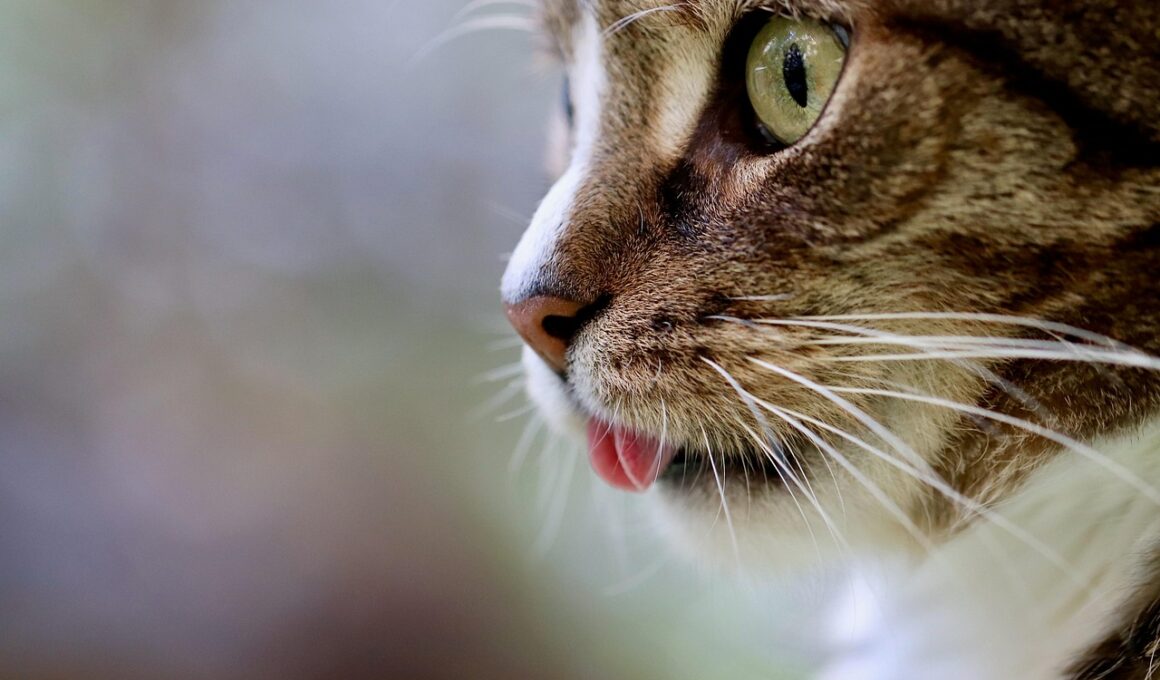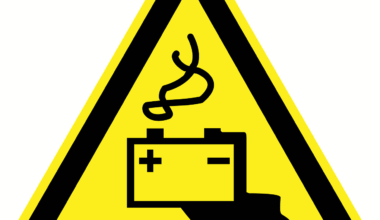How to Create a Safe Space for Your Cat During Emergencies
When emergencies strike, whether it’s a natural disaster or a sudden health crisis, the well-being of your cat is paramount. Cats are sensitive creatures that may perceive changes in their environment as threats. Therefore, it is essential to create a designated safe space for them to retreat to during these stressful times. Choose a quiet corner in your home, away from noise and chaos, where your cat typically feels secure. This safe space could include their favorite blanket, toys, and even a comforting piece of your clothing to help them feel more at ease. Ensure this area is easily accessible and free from hazards like falling objects and sharp corners. Incorporate calming elements such as soft lighting or a soothing pheromone diffuser to create a relaxing atmosphere. Regularly visiting this space with your cat, outside of emergencies, can help them associate it with comfort and safety. Keep emergency supplies easily accessible nearby, including food, water, and a litter box, to minimize any additional stress on your pet during such trying times. A prepared environment can significantly enhance your cat’s emotional state when faced with unpredictable situations.
Another crucial aspect of managing cat stress during emergencies is maintaining a consistent routine. Cats thrive on predictability; therefore, try to maintain your daily schedule as much as possible, even amidst chaos. Feed your cat at the same times each day, and engage in play sessions to provide mental stimulation. This familiarity will help comfort and stabilize them in the face of uncertainty. It’s wise to have a small travel kit prepared that includes essential items like food, water, medications, and a favorite toy. This kit should be stored in an easy-to-reach location so you can grab it at a moment’s notice if needed. Remember to maintain a calm demeanor; your cat will mirror your emotions. If you appear anxious, your cat is likely to pick up on those feelings, which can heighten their own stress. Talk to them softly, and consider using a calm voice to reassure them throughout the process. Additionally, consider playing soft music or utilizing white noise to drown out stressful sounds from outside. This soothing background can enhance their sense of security during emergencies when the world seems chaotic. Creating these calming routines will contribute to a supportive environment for your feline friend.
Another effective method to manage your cat’s anxiety during emergencies is to familiarize them with confinement tools. This may include a comfortable carrier that can serve as a temporary hideaway. Encourage this by associating the carrier with positive experiences, such as treats and cozy bedding. Ensure every family member understands the importance of speaking calmly around the carrier, thus reinforcing the idea that it is a safe zone. Additionally, practicing emergency drills with your cat can help them adjust to confinement and reduce anxiety during real-life situations. Have a clear plan in place for how to quickly secure your cat and your emergency supplies if evacuation becomes necessary. If your cat becomes panicked, offering familiar smells can aid in comfort. Items like a blanket or a worn piece of clothing can help anchor their sense of safety. Additionally, certain calming supplements might be worth exploring with your veterinarian beforehand to equip yourself properly against the unknown. This proactive measure could be significant in alleviating their stress levels, allowing both you and your pet to navigate emergencies with greater ease and confidence.
During an emergency, ensuring your cat’s safety and emotional well-being involves understanding their body language. Watch for signs of stress such as hiding, excessive grooming, or vocalizations, as these behaviors may signal that your cat is feeling overwhelmed. Once identified, address these signals promptly. Offer your cat a quiet space where they can retreat, along with enticing treats and toys to encourage them to engage positively with their environment. In addition, try to create engaging territory featuring vertical spaces, like shelves or cat trees, allowing your cat to observe their surroundings from a safe angle. This verticality can give them a sense of safety and control over their space. Providing enrichment activities during less stressful times will prepare your cat mentally for when emergencies arise. Even simple tasks like hiding treats around their territory can promote natural hunting instincts. Consistent interaction, reassurance, and understanding of their triggers are key elements in effectively managing your cat’s anxiety levels. By addressing their stress through proactive measures and maintaining open communication with your cat, you can help them feel more secure and emotional even in emergencies.
Calm Environment Preparation
Preparing a calm environment can greatly influence your cat’s well-being during emergencies. Keep in mind the importance of the ambiance; low lighting, calming colors, and soft textures can ease the tension significantly. Use items like cat blankets or cat-friendly essential oils under guidance from a vet to enhance relaxation. Also, consider investing in calming tools such as sound machines or anxiety vests. These can provide a sense of comfort by muffling distressing sounds or applying gentle pressure. Gerbill species, or calming pheromones, helps in creating a familiar scent that may help reduce anxiety. Examine your home for areas that might pose additional risks during an emergency; remove any harmful plants or sharp objects your cat could easily access. Having food and water bowls nearby will assure your cat can stay nourished without leaving their safe zone. It’s also wise to set boundaries, creating designated areas that are off-limits during emergencies, allowing them to feel secure in a confined space. Enhancing your cat’s environment while minimizing risks can additionally help yield a sense of assurance and stability, fostering their comfort during any crises.
Additionally, collaboration with professionals can amplify your efforts in managing your cat’s stress levels effectively. Consult with a feline behaviorist who can provide tailored strategies for your specific situation, or speak to your veterinarian about the potential use of anxiety relief medication if you foresee frequent emergencies. They can offer valuable insights into coping mechanisms suitable for your cat’s unique personality. In preparing your cat for emergencies, consider offering training in handling flips, conditioning them with positive reinforcement for calmness in stressful situations. Create a diversion such as engaging toys or treats to transition their focus during crises. Participate in social events or small gatherings with other pets to foster a sense of confidence in your cat while stressing their adaptability. The objective is to make your cat resilient amid chaos by equipping them with the tools they need to be calm and composed. By coordinating with both behaviorists and veterinarians, you will set a framework that benefits not only your cat’s physical well-being but their emotional resilience too.
Finally, always be mindful of your cat’s individual needs and preferences. Each cat is unique, with varying tolerances to stress, so it is crucial to tailor your approach to suit their personality. Regularly assess your strategies and make adjustments when necessary; observe what works and what creates additional stress for your pet. By paying attention to their behavior, you can identify triggers to avoid. Engaging in regular gentle play or grooming can build trust and calmness while reinforcing your bond. Furthermore, regular vet check-ups ensure your cat remains in good health, which can help reduce anxiety levels. Ultimately, a commitment to creating a safe space through preparation, awareness, and understanding will significantly benefit your cat during emergencies. Stress management is not just one-time action; it requires ongoing commitment and adaptation to suit your pet’s evolving needs. Your fine-tuning of their environment and your actions will help in building their resilience, keeping your furry friend calm and comfortable in any situation.


